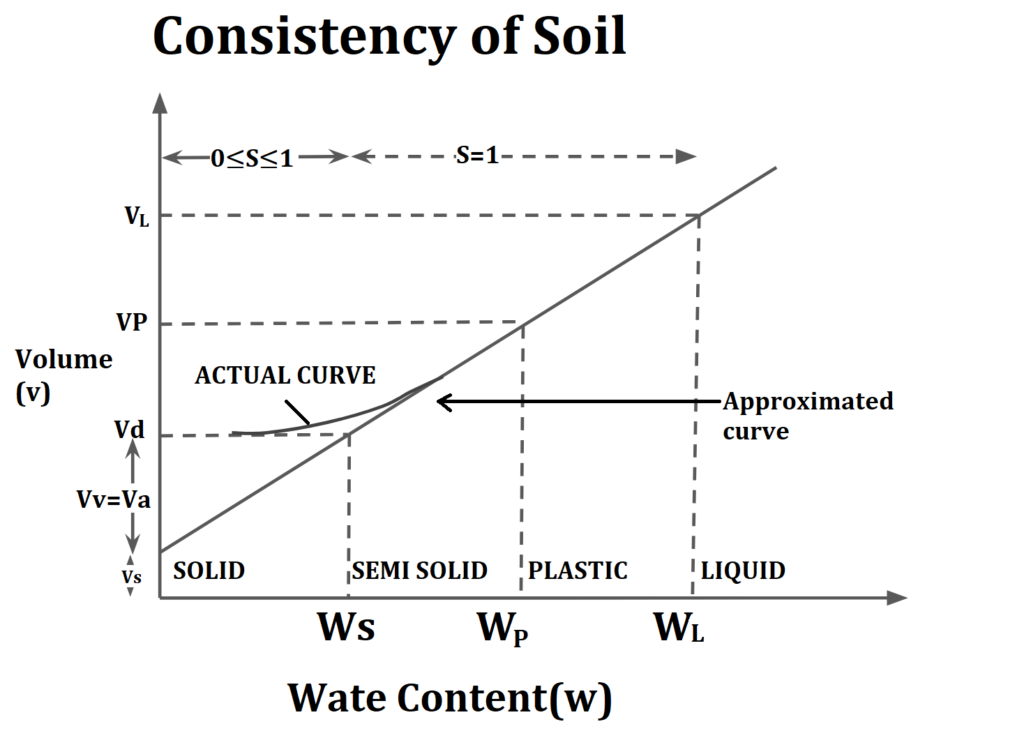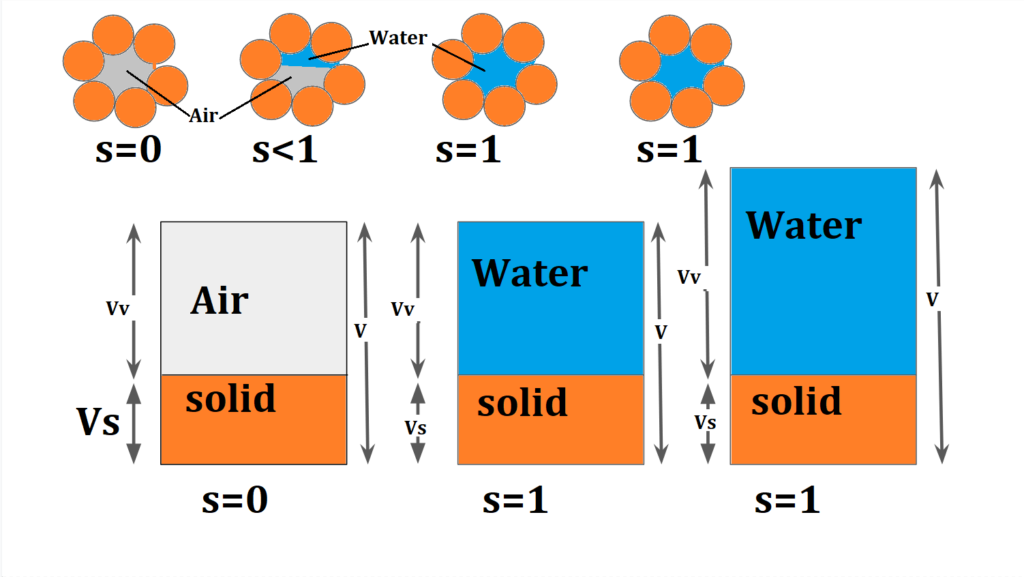Consistency of Soil (How easily can deform soil)
- It is the relative ease with which soil can be deformed.
- This term is used generally for fined-grained soil, in which it is related to large water content.
- It also signifies the degree of firmness of soil which may be stated as soft, stiff or hard. (it indirectly relates to the strength of the soil.)( DEGREE OF FIRMNESS INCREASE = CAN NOT EASY TO DEFORM SOIL)
- Fine-grained soil may be mixed with water to form a plastic paste which can be molded into any form by pressure.
- The addition of water reduces the cohesion making the soil still easier to mould.
- Further addition of water reduces cohesion until it no longer retains its shape under its own weight. (and starts to flow)
- Enough when the water is removed/ dried from the soil mass it passes through different stages of consistency.
Atterberg analysed this in 4 stages of consistency
- Solid state
- Semi-solid state
- Plastic state
- Liquid stage
The water content at which soil passes from one stage of consistency to another stage is termed consistency limits (Atterberg Limits).

Its soil is partially saturated or just saturated any change in water content does not lead to a change in its volume of voids, the volume of soil, voids ratio, or porosity.
But if the soil is in “SUPER SATURATED (S=1)” any change in water content leads to a corresponding change in volume of voids, the volume of soil, voids ratio, and porosity.



| Subject | Soil Mechanics |
| Unit | Soil Formation & Properties of Soil |
| Topic | Consistency of Soil |
| Next Topic | Liquid Limits- Consistency Atterberg Limits |
| Previous Topic | Particle Size Distribution Curve |